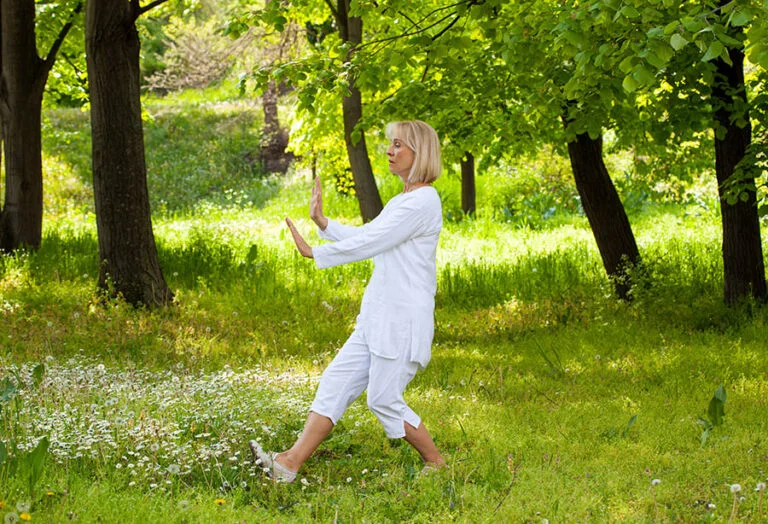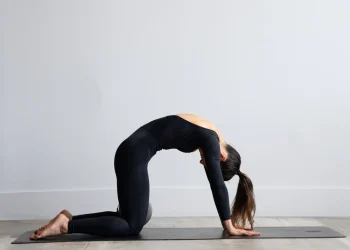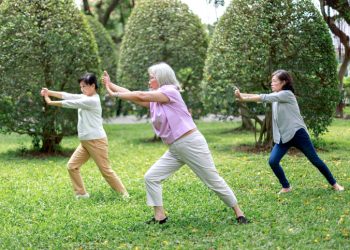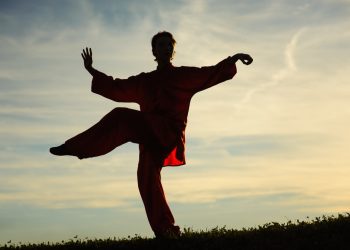Tai Chi Walking, also known as “walking meditation” or “mindful walking” in the Tai Chi tradition, is a gentle yet powerful practice that combines the ancient principles of Tai Chi with the simple act of walking. Unlike regular walking where we often rush from point A to point B lost in thought, Tai Chi Walking transforms each step into a meditation in motion, helping you cultivate balance, inner peace, and body awareness.
This practice is perfect for beginners because it requires no special equipment, can be done almost anywhere, and offers immediate benefits. Whether you’re looking to reduce stress, improve your balance, or simply find a few moments of calm in your busy day, Tai Chi Walking provides an accessible entry point into the world of mindful movement.
Understanding Tai Chi Walking
What Makes It Different?
Tai Chi Walking differs from ordinary walking in several key ways. First, the pace is deliberately slow and controlled, allowing you to become fully aware of each movement. Second, the emphasis is on weight shifting and maintaining continuous, flowing motion rather than simply getting from one place to another. Third, you coordinate your breath with your steps, creating a rhythmic union of body and mind.
The practice draws from fundamental Tai Chi principles: maintaining a low center of gravity, moving from your core (the “dan tien” or energy center located just below your navel), keeping your body relaxed yet alert, and cultivating what practitioners call “sung” – a quality of relaxed readiness.
The Benefits You Can Expect
Regular Tai Chi Walking practice offers numerous benefits that you may begin to notice within just a few weeks:
Physical Benefits: Improved balance and coordination, strengthened leg muscles, better posture, increased flexibility in the ankles and hips, enhanced circulation, and reduced joint pain.
Mental Benefits: Reduced stress and anxiety, improved focus and concentration, greater emotional stability, enhanced mind-body connection, and a sense of inner calm.
Practical Benefits: Unlike many exercises, Tai Chi Walking is low-impact, making it suitable for people of all ages and fitness levels. It can be practiced indoors or outdoors, requires no special equipment, and takes as little or as much time as you have available.
Getting Started: The Basics
Finding Your Practice Space
When you’re just beginning, choose a space where you feel comfortable and won’t be interrupted. A hallway, quiet room, garden path, or park trail all work well. You’ll want a flat surface where you can walk in a straight line for at least 10-15 feet. As you become more experienced, you can practice anywhere, but starting in a calm environment helps you focus on learning the techniques.
What to Wear
Wear comfortable, loose-fitting clothing that doesn’t restrict your movement. Choose flat shoes with thin, flexible soles that allow you to feel the ground beneath your feet – this sensory feedback is important for balance and awareness. Many practitioners prefer walking barefoot when indoors, as this enhances the connection with the ground, but this is entirely optional.
The Optimal Time to Practice
There’s no “wrong” time for Tai Chi Walking, but many practitioners find that morning practice sets a peaceful tone for the day, while evening practice helps release the day’s tensions. Start with just 5-10 minutes per session. Quality matters far more than quantity, especially when you’re learning.
The Foundation: Basic Stance and Posture
Before you begin walking, you need to establish proper posture. This foundation is crucial for both safety and effectiveness.
Stand with your feet parallel and hip-width apart. Unlock your knees slightly – they should never be locked rigid. Imagine a string gently pulling the crown of your head toward the sky, lengthening your spine. Let your shoulders relax downward and slightly back. Your arms hang naturally at your sides, elbows slightly bent. Tuck your chin very slightly to lengthen the back of your neck.
Now, bring your awareness to your breath. Take a few deep breaths into your lower belly, not your chest. Place one hand on your lower abdomen, just below your navel – this is your dan tien, your center. As you breathe, feel this area expand and contract. This is where your movement originates in Tai Chi Walking.
Bend your knees slightly more, lowering your center of gravity just an inch or two. You should feel more stable and grounded. This is your basic stance.
Simple Exercises to Begin Your Practice
Exercise 1: The Weight Shift
This is the fundamental building block of Tai Chi Walking. Stand in your basic stance. Begin to slowly shift your weight onto your right foot. Don’t lift your left foot yet – simply transfer your weight until you feel that 100% of your body weight is supported by your right leg. Notice how your right foot presses more firmly into the ground.
Now, slowly shift your weight back to center so both feet are equally weighted. Then shift to your left foot. Move back to center again. Repeat this shifting motion 10-15 times, coordinating with your breath: exhale as you shift to one side, inhale as you return to center.
This exercise teaches you the controlled weight transfer that forms the basis of every step in Tai Chi Walking.
Exercise 2: The Empty Step
From your basic stance, shift all your weight onto your right foot (as practiced above). Once you’re fully weighted on the right side, slowly peel your left foot off the ground – heel first, then the sole, finally the toes. Lift the foot just an inch or two off the ground. Hold this position for a breath or two, feeling your balance.
Slowly lower the foot back down – toes first, then sole, then heel – but don’t transfer weight to it yet. The left foot is now “empty” – touching the ground but bearing no weight. Repeat on the other side. Practice this 8-10 times on each leg.
This exercise develops your balance and teaches you the distinction between “full” (weighted) and “empty” (unweighted) feet – a core concept in Tai Chi.
Exercise 3: Your First Tai Chi Steps
Now you’re ready to put it all together. Start in your basic stance. Shift your weight completely onto your right foot. Peel your left foot off the ground and step forward about half your normal stride length – don’t overreach. Place the left foot down heel first, but keep your weight on the back (right) foot.
Here’s the key: gradually shift your weight forward onto the left foot, allowing your knee to bend slightly as it accepts the weight. This should be a smooth, continuous motion taking 3-5 seconds. As your weight transfers fully to the left foot, allow the back (right) heel to rise naturally off the ground.
Now you’re weighted on the left foot. Pause briefly, then peel the right foot (which is now “empty”) off the ground and step it forward. Continue this pattern: step, shift weight, pause, step again.
Start with just 5-6 steps, then turn and walk back. Focus on smoothness rather than perfection.
Building Your Practice: A Four-Week Plan
Week 1: Foundation Building
Practice the weight shift and empty step exercises daily for 5-10 minutes. Don’t rush into walking yet. This week is about building body awareness and balance. Notice how your weight distributes through different parts of your foot as you shift.
Week 2: First Steps
Begin incorporating Tai Chi steps, but keep sessions short – just 10-15 steps at a time. Focus on coordinating your breath: exhale as you step and shift weight forward, inhale during the brief pause before the next step. If you feel unstable, slow down even more.
Week 3: Extending Duration
Increase your walking to 10-15 minutes per session. Start exploring different tempos – some days walk extremely slowly (taking 5-10 seconds per step), other days move a bit faster. Both speeds offer different benefits and challenges.
Week 4: Deepening Awareness
Continue your practice but now add attention to your hands and arms. Let them swing gently and naturally opposite to your legs (left arm forward when right leg steps forward). Keep the movement small and effortless. Begin practicing outdoors if weather permits – the varied terrain adds new dimension to your balance training.
What to Expect: The Journey Ahead
The First Few Sessions
Initially, you may feel awkward or frustrated. Your mind will wander. Your legs might shake a bit as they adjust to the slow, controlled movement. This is completely normal. Remember, you’re learning an entirely new way of moving. Be patient with yourself.
Common Challenges and Solutions
“I feel off-balance” – This usually means you’re moving too quickly or trying to step too far. Shorten your stride and slow down even more. Make sure you’re fully transferring weight before lifting the empty foot.
“My legs get tired quickly” – Tai Chi Walking works muscles differently than regular walking. Start with shorter sessions and gradually build endurance. Ensure you’re not bending your knees too deeply at first.
“My mind won’t stop wandering” – This is perhaps the most common challenge. Each time you notice your mind has drifted, gently bring your attention back to your feet, your breath, or the sensation of weight shifting. This practice of returning your focus is actually the meditation – it’s not a failure when your mind wanders, it’s an opportunity to practice returning.
“I’m not sure I’m doing it right” – If you’re moving slowly, breathing naturally, and paying attention to your body, you’re doing it right. There’s no perfect form when you’re beginning. Progress comes from consistent practice, not perfection.
Creating a Consistent Practice
Making It a Habit
The key to long-term success is consistency, not intensity. It’s better to practice for 5 minutes every day than for an hour once a week. Link your Tai Chi Walking to an existing habit – perhaps before your morning coffee or right after you arrive home from work.
Tracking Your Progress
Keep a simple journal noting the date, duration, and one or two observations from each session. You might note: “Felt more balanced today” or “Mind was very busy” or “Noticed my breathing became naturally deeper.” This helps you see progress over time and keeps you motivated.
Staying Motivated
Set small, achievable goals. Rather than “master Tai Chi Walking,” aim for “practice five minutes daily this week” or “complete ten smooth steps without wobbling.” Celebrate these small victories.
Consider finding a walking partner or local Tai Chi group. Community support can greatly enhance your practice, though it’s certainly not necessary.
Adapting to Your Life
Tai Chi Walking is wonderfully adaptable. Feeling stressed at work? Take five minutes to practice in a quiet hallway. Waiting for an appointment? Practice in place with just the weight shifting. Can’t sleep? A few minutes of Tai Chi Walking can calm the mind. The practice meets you wherever you are.
Moving Forward
As you continue your practice beyond these initial weeks, you’ll discover that Tai Chi Walking is not just an exercise but a gateway to greater body awareness and inner peace. Each step becomes a meditation, each breath a return to the present moment.
The beauty of this practice is that there’s always deeper to go. Even advanced practitioners continue to discover new subtleties in something as simple as taking a step. Let this be encouraging rather than daunting – you’re embarking on a lifelong journey of discovery.
Remember, in Tai Chi, we say the journey is the destination. There’s no finish line, no point at which you’ve “completed” the practice. Each session is complete unto itself, offering its own gifts and lessons.
Start today with just five minutes. Step slowly, breathe deeply, and notice what you notice. The path of a thousand miles begins with a single, mindful step.
Final Encouragement
You now have everything you need to begin your Tai Chi Walking practice. Don’t wait for the perfect moment or until you feel “ready.” Beginnings are always a bit uncertain – that’s what makes them beginnings. Trust the process, be gentle with yourself, and remember that every expert was once a beginner who simply kept showing up.
Welcome to the practice of Tai Chi Walking. May each step bring you peace, balance, and joy.
- what is tai chi walking for beginners
- step-by-step beginner instructions
- beginner-friendly tutorial
- essential tips for beginners
- simple routine for beginners
- beginner exercises to start with
- finding beginner classes
- practicing indoors as a beginner
- beginner’s guide to walking meditation
- finding your beginner pace






